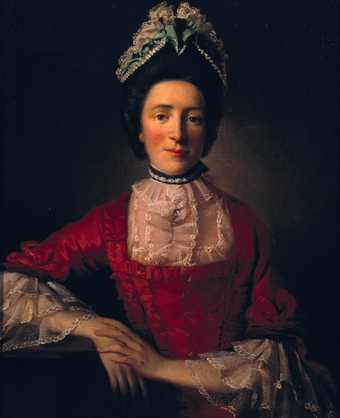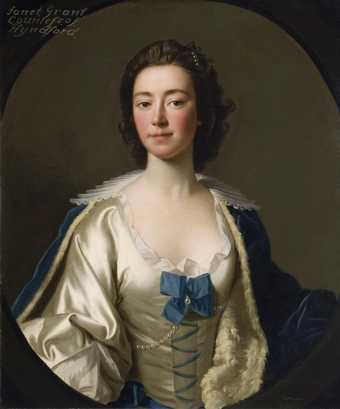Artist biography
Ramsay was born in Edinburgh. His father, also Allan Ramsay, was an important Scottish poet from whom the younger Ramsay inherited a tradition of strong nationalistic pride. Ramsay junior was instrumental in formulating a native Scottish style of painting, as his father had done for poetry.
Ramsay studied in London at St Martin's Lane Academy and at Hans Hysing's studio, before going to Italy. He worked from 1736 to 1738 at the French Academy in Rome under Francesco Imperiali and under Francesco Solimena in Naples. On his return he settled in London, although he continued to be active in Edinburgh. Between 1754 and 1757 he was in Italy, mostly in Rome. He was elected a Fellow of the Society of Antiquaries in 1743. During his prime period he had a virtual monopoly on court painting. The envy this aroused is manifested in a remark made by Ramsay's competitor Joshua Reynolds that Ramsay was 'not a good painter' (quoted in Smart 1952, p.106). He became the official painter to George III in 1760, and Principal Painter-in-Ordinary in 1767. His assistants included David Martin, Alexander Nasmyth and Philip Reinagle.
Ramsay was a correspondent of Voltaire and Rousseau, and a writer of poetry and essays. In On Ridicule (1753) he wrote that truth was 'the leading and inseparable principle in all works of art' (quoted in Smart 1952, p.70). Other essays include Dialogue on Taste (1755), and The Investigator (1762). After a crippling injury to his arm, he retired to Rome in 1782. He died on the journey home, at Dover.
Further
reading:
Alastair Smart, The Life and Art of Allan Ramsay, London 1952
Alastair Smart, Allan Ramsay: Painter, Essayist and Man of the Enlightenment, New Haven and London 1992
Terry Riggs
January 1998
Wikipedia entry
Allan Ramsay (13 October 1713 – 10 August 1784) was a Scottish portrait painter.
This biography is from Wikipedia under an Attribution-ShareAlike Creative Commons License. Spotted a problem? Let us know.
Read full Wikipedia entry






